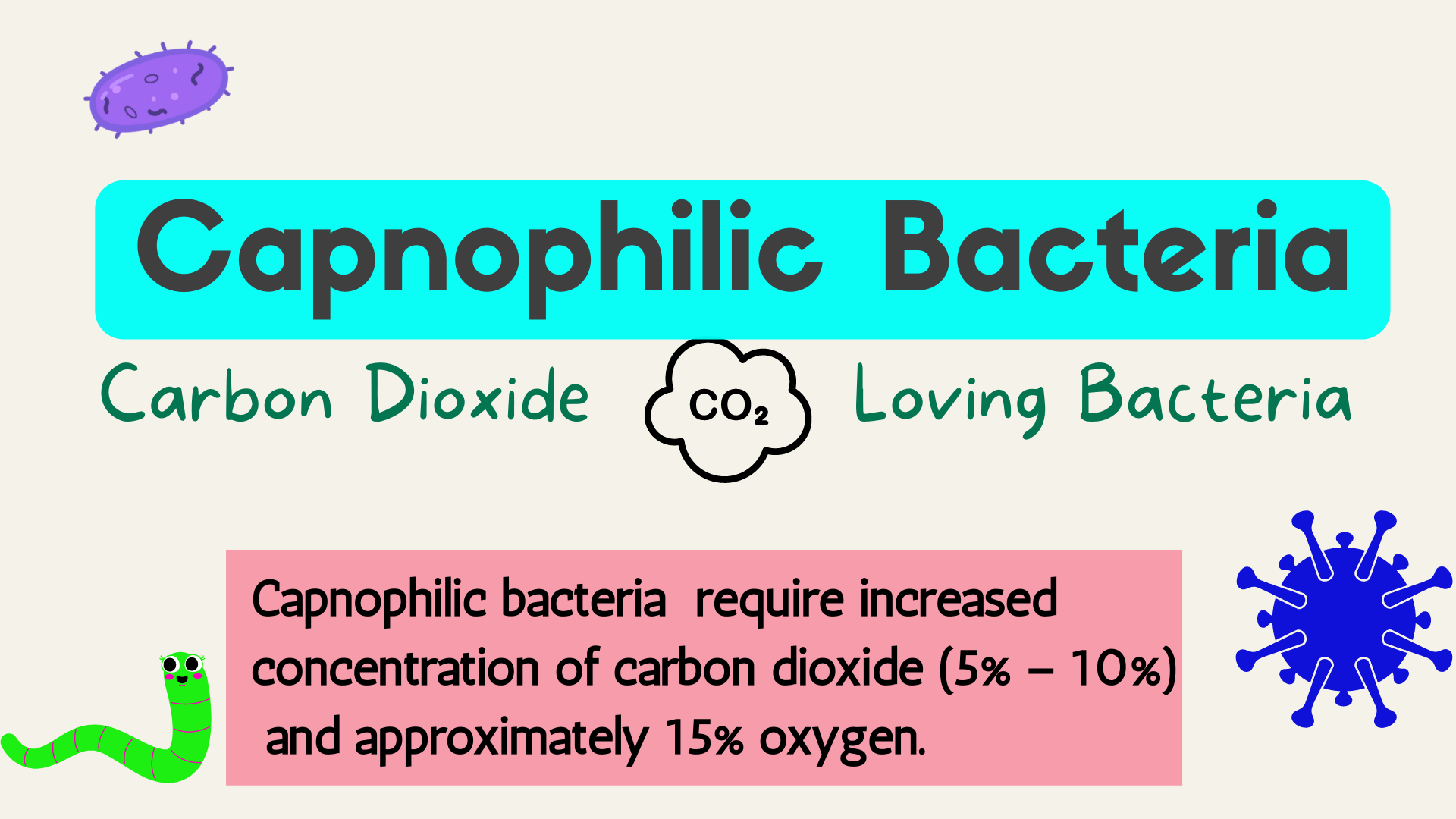Capnophilic bacteria are a fascinating group of microorganisms that thrive in environments with increased levels of carbon dioxide (CO2). These bacteria have unique characteristics and play significant roles in various aspects of human health and scientific research. In this blog post, we will explore what capnophilic bacteria are, their defining features, examples, growth requirements, the reasons behind their need for increased CO2 levels, their role in human health, medical significance, methods to culture them in the laboratory, and some notable research studies.
What are Capnophilic Bacteria?
Capnophilic bacteria are microorganisms that thrive in the presence of high concentrations of carbon dioxide (CO2). The term “capnophile” comes from the Greek words “kapnos,” meaning “smoke,” and “philos,” meaning “love.” Capnophilic bacteria, also known as carbon dioxide-loving bacteria, are microorganisms that require higher levels of CO2 for optimal growth and survival. Unlike most other bacteria that grow well in normal atmospheric conditions, capnophiles thrive in environments where CO2 levels are elevated. Such types of bacteria are found in a variety of environments, including the human body, the environment, and food.
Definition of Capnophilic Bacteria
Capnophilic bacteria are defined as microorganisms that require or grow best in the presence of high concentrations of carbon dioxide (CO2). The optimal CO2 concentration for growth of capnophile bacteria varies from species to species, but is typically in the range of 5-10%. Capnophiles are often found in the respiratory tract, the gastrointestinal tract, and the female reproductive tract.

Characteristics of Capnophiles:
Capnophiles have ability to grow in the presence of high concentrations of CO2. They are also typically microaerophilic, meaning that they can grow in the presence of small amounts of oxygen. Capnophile bacteria are often motile, meaning that they can move around. They are also typically Gram-negative, meaning that they have a cell wall that is made up of lipopolysaccharide.
Examples of Capnophilic Bacteria:
Several well-known bacteria fall into the capnophilic category. Examples include
- Campylobacter jejuni
- Campylobacter coli
- Campylobacter fetus
- Haemophilus influenzae
- Streptococcus pneumoniae
- Neisseria meningitidis
- Fusobacterium necrophorum
- Bacteroides fragilis
- Porphyromonas gingivalis
Growth Requirements of Capnophiles:
Capnophile bacteria require specific conditions for optimal growth. In addition to elevated CO2 levels, they often prefer a slightly acidic pH. Some capnophiles also require a reduced oxygen level or even an anaerobic environment. These specific growth requirements make them distinctive and necessitate specialized techniques for their cultivation in the laboratory.
Why do Capnophile Bacteria Require Increased CO2 Levels?
These bacteria have evolved to thrive in environments with increased CO2 levels for various reasons. The higher CO2 concentration aids in the production of certain enzymes necessary for their metabolism. It also creates a favorable environment for their growth by altering the pH and facilitating nutrient uptake.
Role of Capnophile Bacteria in Human Health:
Capnophile bacteria have significant implications for human health. Some species are responsible for respiratory tract infections, meningitis, and septicemia. For instance, Streptococcus pneumoniae is a leading cause of pneumonia, while Neisseria meningitidis causes meningococcal meningitis. Understanding the behavior and characteristics of capnophiles is crucial in diagnosing and treating such infections.
Medical Significance of Capnophile Bacteria:
The medical significance of capnophile bacteria lies in their role as pathogens and their ability to cause disease in humans. Their specific growth requirements and pathogenic nature necessitate specialized laboratory techniques for their identification, treatment, and prevention. Capnophiles are of medical significance because they can cause a number of infections. Some of the most common infections caused by capnophilic bacteria include:
- Meningitis
- Pneumonia
- Septicemia
- Intestinal infections
- Ear infections
- Eye infections
Methods to Culture Capnophilic Bacteria in the Laboratory:
Cultivating capnophile bacteria in the laboratory requires specific methods. An example is the use of a CO2 incubator that provides controlled CO2 concentrations, temperature, and humidity. Culturing these bacteria may involve using selective media, adjusting oxygen levels, and maintaining appropriate pH conditions. The most common method is to use a candle jar. A candle jar is a glass jar that has a candle burning inside of it. The heat from the candle creates a high concentration of CO2 in the jar, which is ideal for the growth of capnophilic bacteria.
Fastidious and non-Fastidious nature of capnophilic bacteria
Capnophilic bacteria can be both fastidious and non-fastidious, depending on the specific bacterial species.
When it comes to capnophilic bacteria, some species can be fastidious, while others are non-fastidious. For example, bacteria like Neisseria meningitidis and Haemophilus influenzae are considered fastidious capnophiles. They have specific nutritional requirements and often need enriched media containing various growth factors and supplements to support their growth.
However, other capnophilic bacteria, such as Streptococcus pneumoniae, can be classified as non-fastidious capnophiles. While they still require increased CO2 levels for optimal growth, they can grow on standard laboratory media without requiring additional growth factors or complex nutrient supplementation.
Research Studies on Capnophilic Bacteria:
Numerous research studies have been conducted to understand the behavior, pathogenesis, and treatment of capnophilic bacteria. Some studies have focused on the development of vaccines against certain capnophiles, while others have explored the mechanisms by which these bacteria cause disease. Understanding the unique features of capnophile bacteria contributes to advancements in medical research and public health.
Conclusion:
Capnophilic bacteria are a group of microorganisms that require increased levels of carbon dioxide for growth and survival. Their distinct characteristics, medical significance, and research importance make them a fascinating topic of study. By exploring their growth requirements, role in human health, and laboratory culture methods, we gain valuable insights into the behavior and impact of capnophilic bacteria. Further research in this field will continue to enhance our understanding of these bacteria and lead to advancements in medical treatments and preventive measures.